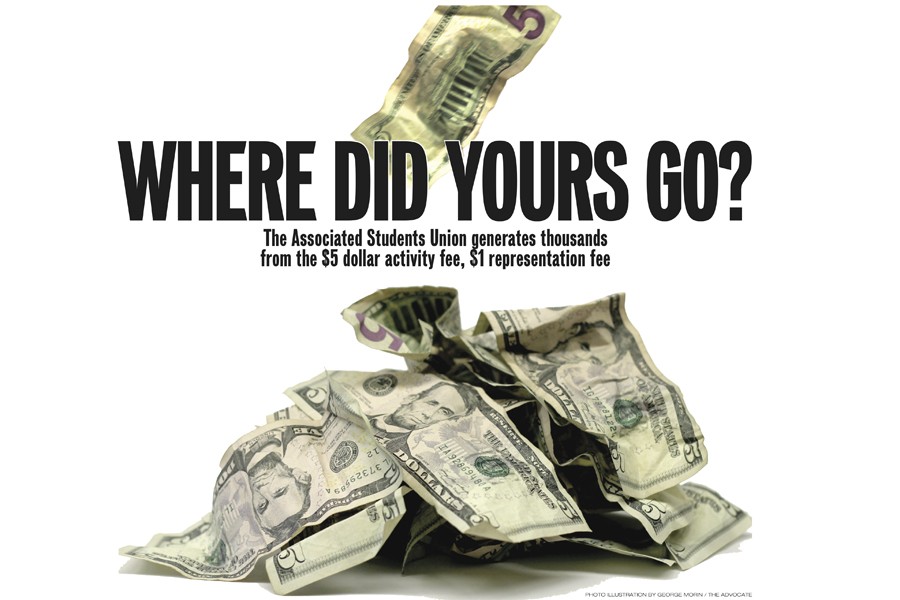Where did yours go?
The Associated Students Union generates thousands from the $5 dollar activity fee, $1 representation fee
Oct 7, 2014
Transparency and integrity are paramount values in any government organization, and to that end, the Associated Students Union’s finances are an open book.
After the fall 2013-spring 2014 ASU Board left Contra Costa College with $20,000 in outstanding payments to justify, here is a closer look at how the student activity and representation fees were spent for that academic year.
The ASU spent $49,837.56 during the July 2013-June 2014 academic year, from the funding generated by the student activity fee. The ASU spent $13,692.93 from the student representation fee.
The fees are a $5 fee and a $1 fee students in the district must pay, or actively waive, during every semester or have their enrollment capabilities affected.
The student activity fee went to a wide variety of subjects. The ASU used $15,000 last year to discount the cost of several books, if students rented them from the Bookstore. The ASU also used roughly $4,000 to hire drummers for a Black History Month celebration and also gave money to the physical education department for equipment in the Fitness Center. The ASU also hosted a showing of the documentary “Inequality for All” in LA-100.
“Ever since the fee came to be we’ve asked them for money for the physical education department,” physical education professor Rudy Zeller said. “We’ve received money from them before, but last year we had to submit our request several times.”
Business Office Manager Nick Dimitri said a mishandling of necessary paperwork at the ASU level caused a delay between the time of the ASU’s official vote on a subject and the time the departments or groups that were allocated funds actually received them.
Kinesiology department Chairperson Beth Goehring said, “There was an issue in May; basically we were told we had spent money that we didn’t actually have yet.”
According to documents provided by senior accountant Jacqueline Ore, program expenses cost the ASU $15,000, which came from funding generated by the student activity fee.
A budget item labeled “miscellaneous” cost the ASU $14,864.03, according to the same documents provided by Ore.
The ASU spent $4,850 of the fee on entertainment. Reimbursements to other departments and offices on campus cost the ASU $4,518.12 from the fee.
Food purchases for events such as the ASU’s joint venture with the Inter-Club Council, Club Rush, cost the ASU $2,294.35 last year.
The ASU spent $2,100 last year on an item marked “contributions” on the report provided by Ore.
Some $1,250 from the student activity fee was allocated to fund the individual members of the ASU’s stipends.
Printing costs ran the ASU $530.57, and for meals the ASU spent $192.00 from the student activity fee. The student representation fee was spent on more administrative tasks and events the ASU partook in.
Conference registration, such as the American Student Government Association conference the ASU attends, cost the board $4,925.
“ASGA conferences are a great learning opportunity for the board,” ASU President Antone Agnitsch said. “They hold workshops and lectures to train us on the procedures we’re supposed to follow and how to get things done.”
Hotel accommodations cost the ASU Board $3,543.22.
A further $2,350 was allocated to the ASU for members’ stipends from the student representation fee, bringing the total for stipends to $3,600.
The ASU spent $1,516 on airline tickets. Last year’s ASGA conference was in Los Angeles, according to Agnitsch.
Exactly $812.71 from the student representation fee was allocated for meals.
Aside from airline tickets, the ASU spent $256 on transportation.
The ASU allocated $190 on “miscellaneous” and $100 on reimbursing other departments on campus.


